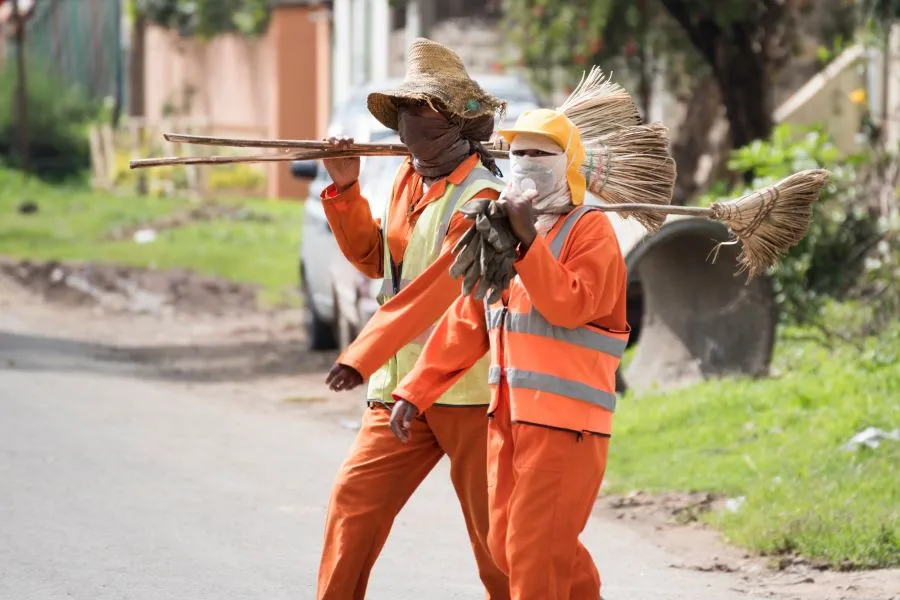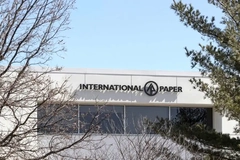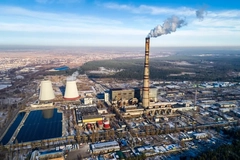Ethiopian incinerator misses output targets, report flags tech mismatch in African waste streams
Key takeaways
- GAIA finds Ethiopia’s Reppie waste-to-energy plant operating at less than half capacity.
- Imported incineration technology mismatches Africa’s predominantly organic, high-moisture waste streams.
- The report highlights toxic ash risks, weak oversight, and social impacts, including income loss for waste pickers and unfulfilled job promises.
A new report from the Global Alliance for Incinerator Alternatives (GAIA) has revealed that the Reppie waste-to-energy facility in Addis Ababa, Ethiopia, has failed to meet its economic and environmental commitments.
Opened in 2018, the facility aimed to process 1,400 tons of municipal solid waste (MSW) per day, such as food packaging, plastic films, cardboard, and beverage containers. It aimed to redirect MSW from Koshe landfill.
GAIA’s report estimates the plant processes 396 to 650 tons of waste per day — less than half of its expected capacity. Approximately 3,000 tons of waste still go to the Koshe landfill.
Packaging Insights speaks with Weyinmi Okotie, clean air program manager at GAIA Africa, to discuss the impact of the Reppie facility, exploring the need for technology that factors in the unique and complex nature of waste management in Africa.
“The underperformance of the Reppie waste-to-energy facility highlights a major mismatch between imported incineration technology and Ethiopia’s waste composition, which is mainly organic and wet, like much of Africa’s,” says Okotie.
The lower volume halved the electricity output to approximately 92.8 GWh per year, falling short of the projected 185.6 GWh per year, according to the report.
African waste realities
Promoted as Africa’s first waste-to-energy facility, the project cost US$120 million. However, GAIA’s report estimates the facility has an annual operating cost of US$5.2 million.
Okotie says: “The technical assumptions used during the facility’s design did not align with Ethiopia's actual waste stream. This resulted in ongoing operational failures, inconsistent energy generation, and continued dependence on the Koshe dumpsite.”
“Reppie demonstrates the risks of adopting European or Asian incineration systems without customizing them to fit African waste realities.”
He adds that low-calorific, high-moisture waste restricts burning efficiency, forcing the plant to use additional fuel and lowering energy recovery.
Transparent emissions monitoring
 The report says informal waste pickers lost 50% of their income as the incinerator competes for the same materials.According to the report, the Reppie facility produces 85 metric tons of toxic ash daily. Okotie argues that the project lacks a clear, publicly available plan for safe ash disposal.
The report says informal waste pickers lost 50% of their income as the incinerator competes for the same materials.According to the report, the Reppie facility produces 85 metric tons of toxic ash daily. Okotie argues that the project lacks a clear, publicly available plan for safe ash disposal.
He adds: “Despite official claims of safe operation, nearby communities have reported respiratory issues, skin irritation, and unpleasant odours. The gap between official environmental impact assessments and actual experiences shows weak regulatory oversight, limited independent monitoring, and poor enforcement — all common issues in rapidly urbanising African cities.”
GAIA Africa calls for an “urgent” biomonitoring exercise to assess levels of heavy metals and organic pollutants in the area, which Okotie argues has been “chronically exposed” to emissions from Reppie.
Material and worker competition
The report highlights the 2017 Koshe landfill landslide, which killed 116 people, as evidence of Ethiopia’s urgent need to address safety, public health and environmental risks linked to inadequate waste disposal.
The report notes that informal waste pickers saw a 50% drop in income after the incinerator was installed. Okotie explains that this was because recyclables became harder to find, due to uptake by the incinerator.
“This income loss highlights a systemic failure to recognize and include the informal sector, which has been crucial for recycling and resource recovery in the city,” he adds.
“Instead of forming formal partnerships, offering protections, or providing alternative job opportunities, the waste-to-energy model displaced workers who had long filled the gaps in municipal waste services. The report shows increased competition over recyclable materials, community tensions, and even cases of waste pickers resorting to begging.”
The facility aimed to create 8,000 new jobs, but the report notes that this never materialized for local communities. Okotie argues that the Reppie facility exposes how technological solutions imposed without considering social inclusion can “increase inequalities and disrupt already vulnerable livelihoods.”
The African context
Understanding the failures of the Reppie waste-to-energy facility in Addis Ababa is contingent on understanding the waste realities of Africa, says Okotie.
“Reppie reflects a broader pattern across Africa: many cities are facing rapidly increasing waste generation, insufficient collection systems, low waste segregation, and dumpsites overloaded beyond capacity.”
“In this context, incineration is often advertised as a quick, modern solution. However, as the study suggests, the technology does not fit well with African waste streams and local realities, often resulting in high costs, poor performance, and negative social impacts.”
The report outlines policies to improve waste management systems in Africa, highlighting the need to prioritize zero-waste, decentralized solutions, such as composting or recycling hubs.
Moreover, Okotie advocates for a sustainable waste strategy that formalizes and protects waste pickers, strengthens environmental governance, invests in behavior change and segregation, and shifts climate finance away from costly incineration toward higher-impact circular approaches.











